| Home | Diary/Calendar | Facebook | Telegrams | Tumblr |
 I/EYEgasm I/EYEgasmDay-to-Day Diary/Calendar of Exciting Events!!! (...and required readings / assignments) |
Jump to the latest CAT 125/Mandeville 210
seminar assignment!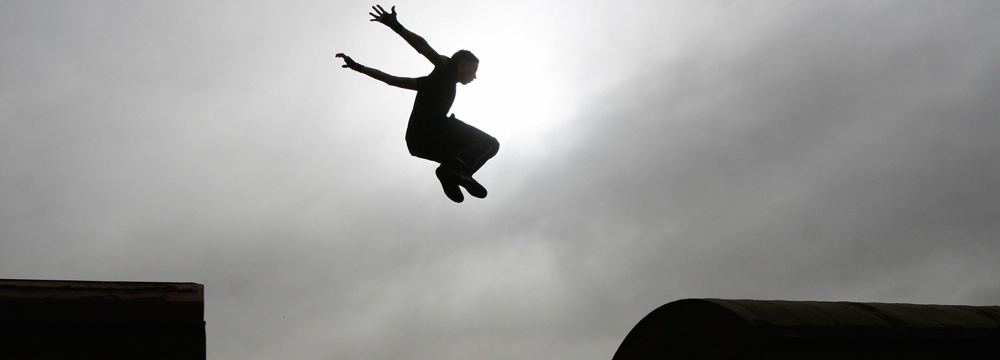 |
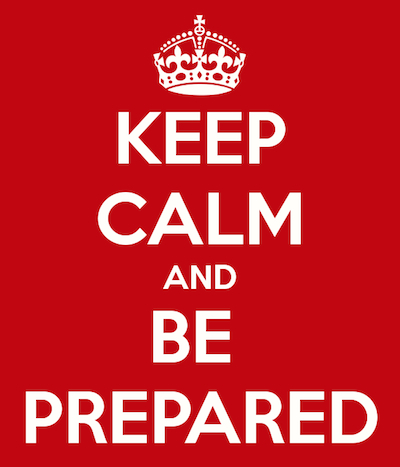 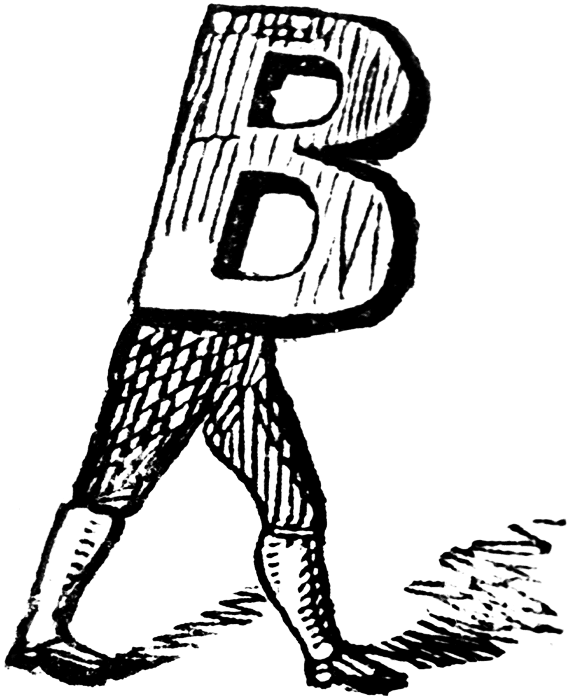 e
sure to come into class having completed whatever is
listed in the box
below on a given day. In general, we use paper, analog
books in this
class and it is best to bring that book with you to
class in case we
have an in-class assignment. e
sure to come into class having completed whatever is
listed in the box
below on a given day. In general, we use paper, analog
books in this
class and it is best to bring that book with you to
class in case we
have an in-class assignment. Listing of Writing/Photography/Video
Assignments for the Quarter Listing of Writing/Photography/Video
Assignments for the Quarter1. You Are
Berger/McLuhan (Week Two)
2. Picturing Auto/biography (Week Four) 3. Self Historiography (Week Six) 4. Ignite Speech TBA (Week Eight) 5. Website Portfolio Assignment (Daily/Weekly) |
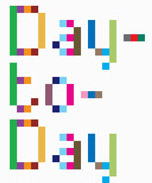  
|
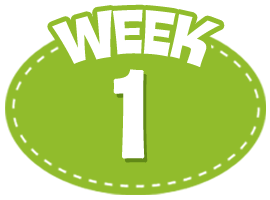 Monday MondaySeptember, 26, 2016 We walk into the bizarre, bunker-like confines of our below basement classroom expecting to be regaled with lessons in "How to Create a Resume" "The Secrets of the Curriculum Vitae" "13 Ways to Ace a Personal Interview" and we are shocked when we come face to face with our professor, who is seemingly intent on teaching a Cultural Studies seminar. But what's really going on? Today we find out. We walk down into the bunker having carefully read Molly Languir's profile of ciphered Instagram artist from Argentina, Amalia Ulman. If you wish, you can also start paging through Marshall McLuhan's amazing THE MEDIUM IS THE MASSAGE, but we probably won't get to it till Wednesday. REQUIRED READING  |
| Wednesday
September 28, 2016 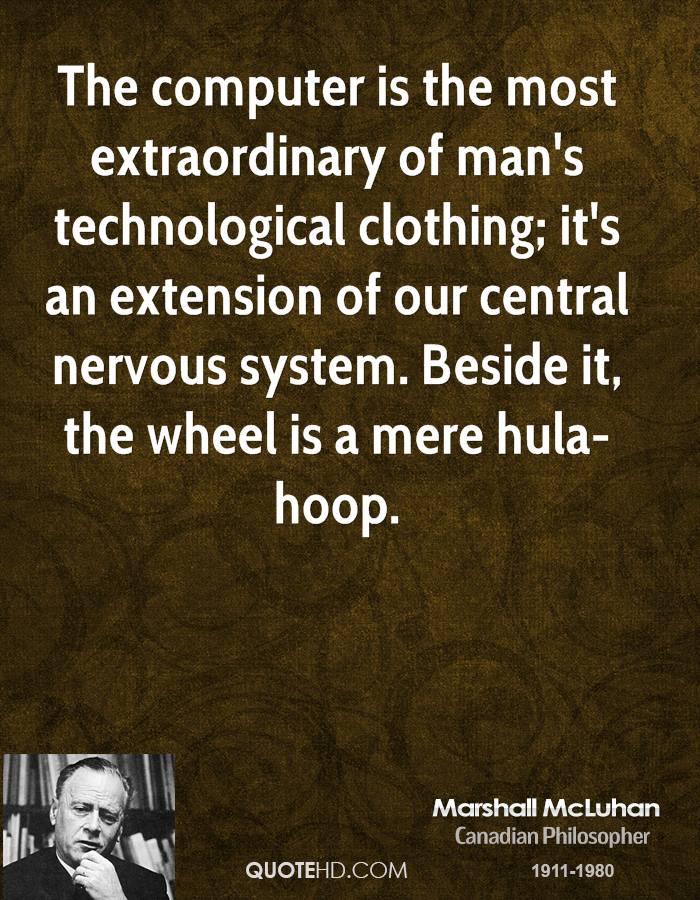 Read Marshall McLuhan's THE MEDIUM IS THE MASSAGE It is the second day of class and you walk in having purchased and read Marshall McLuhan's and Quentin Fiore's THE MEDIUM IS THE MASSAGE: AN INVENTORY OF EFFECTS. I would tell you what page to read up to, but this book, an anti-book of sorts, has few page numbers--technically I am asking you to read to page 119 (but consult the image below to see up to what page to read). For years, Marshall McLuhan was Director of the University of Toronto's Center for Culture and Technology--in a sense he is the intellectual founding father of much of what serves as the foundation for your own Culture, Art, Technology emphasis here at Sixth College. As you read, consider the complications that McLuhan introduces for individuals, YOU, tasked with packaging yourself for various media: text, web, performance, and/or video. Be sure to note a moment or two from the text that you view to be curious, provocative, useful, compelling, or confusing so that we can talk about it in our big seminar gathering in the "lovely" basement called Mandeville 210, aka Bunkerlandia! Read from the beginning of the book to this page: 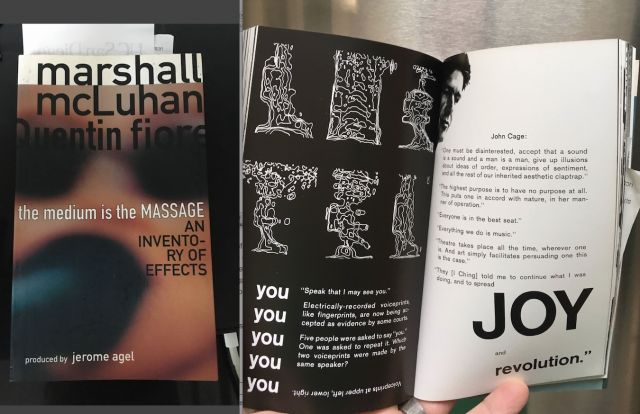 |
 Website/Journal/Video Portfolio Throughout the semester, you are expected to keep a journal of your encounters with the materials (books, film, video, art, web) we are experiencing/reading/screening in class. This "journal" does not have to be an analog journal, it can be a blog, a livejournal, a wordpress, a unique instagram hashtag, a videoblog, a series of youtube videos--the sky is the limit. We learned from McLuhan that the medium is the message. What kind of message do you want to share. Your pieces can be critical, analytical, comedic, ironic, etc--they do not have to be consistent nor do they have to be rehearsed or perfect. You can even vary the media employed: maybe one week you curate a cluster of photographs; the next, a diary-entry; the next, a short video. What do we want to see/witness? A sustained series of reflections on the works/lectures that make up this semester adventure together that carry the trace of you! What are our expectations for full, A-level participation for this exercise that makes up 20% of your course grade? It should be made up of no more than 14 entries and no less than 8. Your cluster of pieces should show thought, focus, reason, and motivation. 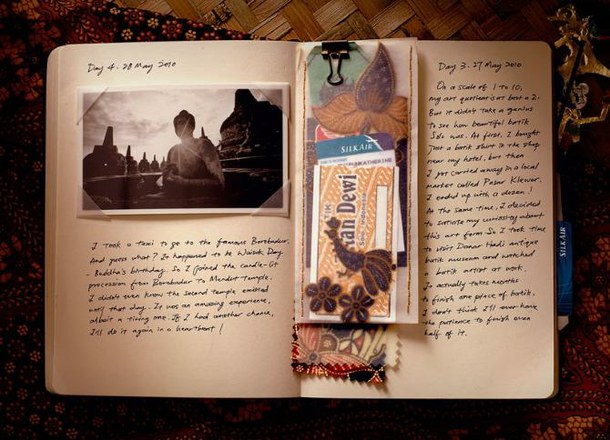 |
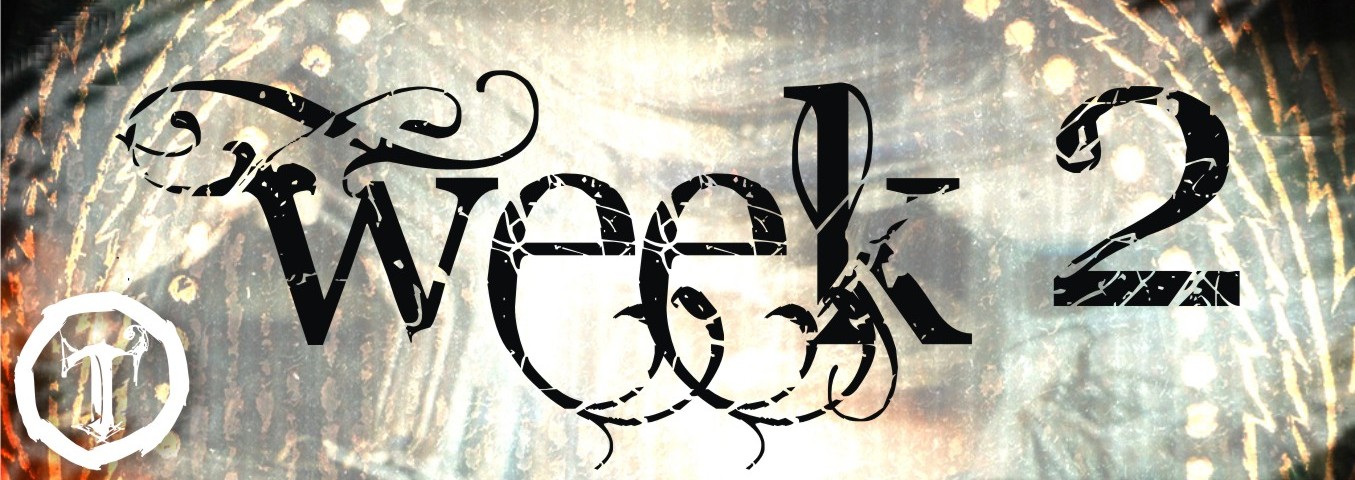 |
| Monday October 3, 2016 Read to page 127 in John Berger's WAYS OF SEEING! Ostensibly a history of oil painting, Berger and company's project evolves into a reconsideration of seeing in general. Both Berger and McLuhan are outstanding and influential critics of 20th century mass culture--where do they overlap? Do their ideas come into conflict in any way? Do take the time to read/scan/screen the chapters with no words--in class we will seek to supplement the silence and draw conclusions as to what the hell Berger and his gang of semioticians is up to! 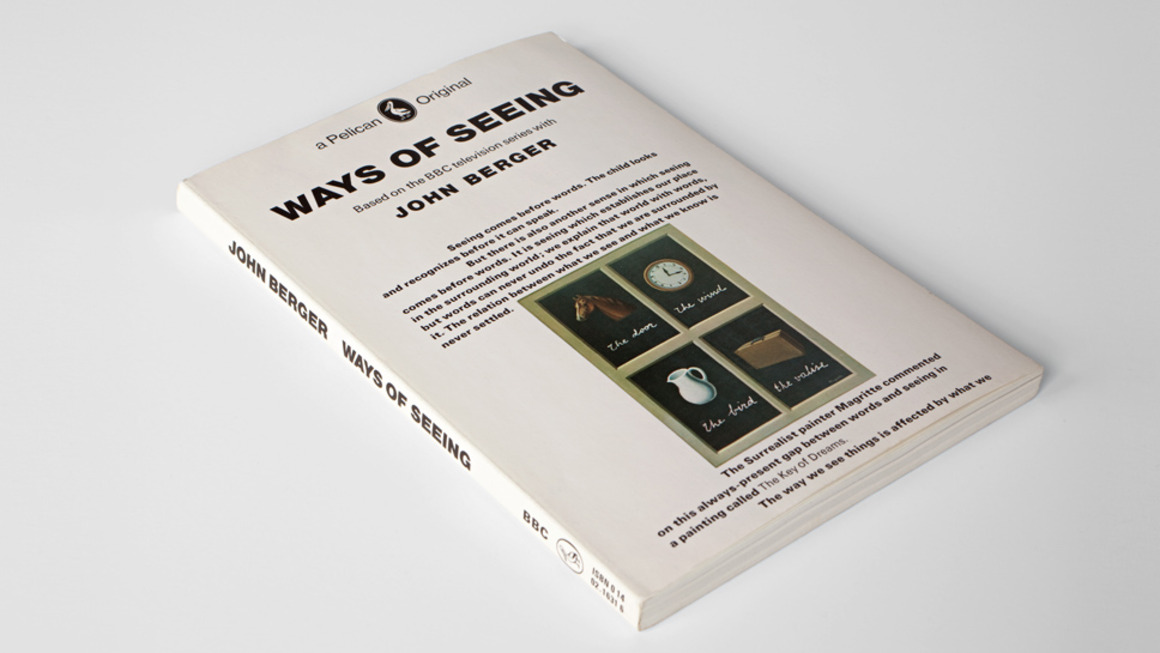 |
| Wednesday October 5, 2016 Finish reading Berger et al's WAYS OF SEEING.  |
YOU ARE
BERGER/MCLUHAN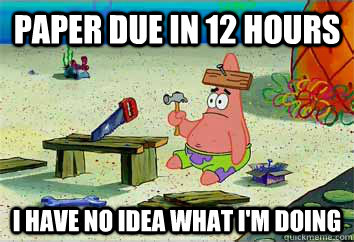 Select
in a contemporary advertisement that you will subject
to a Berger-esque or McCluhan-like critical treatment.
Give it a sexy title, your best writing, 250 words
(that's about one page typed, Times font,
double-spaced, with 1-inch margins) and turn it in to
Dr. Nericcio at the beginning of our big seminar. What
is key in this assignment? Your ability to
mimic/mirror the look, feel, critical methodology you
experience with Berger and McLuhan. Select
in a contemporary advertisement that you will subject
to a Berger-esque or McCluhan-like critical treatment.
Give it a sexy title, your best writing, 250 words
(that's about one page typed, Times font,
double-spaced, with 1-inch margins) and turn it in to
Dr. Nericcio at the beginning of our big seminar. What
is key in this assignment? Your ability to
mimic/mirror the look, feel, critical methodology you
experience with Berger and McLuhan. |
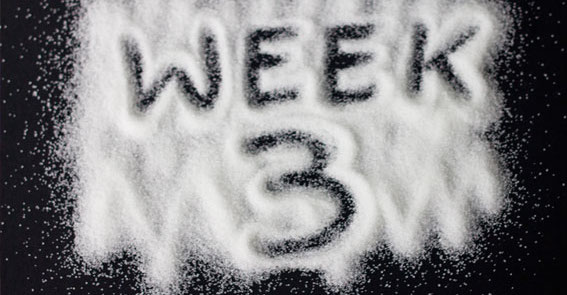 |
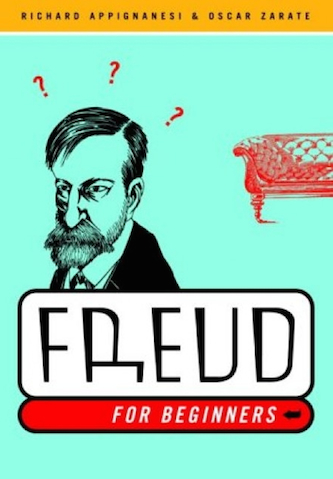 Monday MondayOctober 10, 2016 Walk into class having devoured Richard Appignanesi and Oscar Zarate's FREUD FOR BEGINNERS. During the coming week, keep a notebook beside your nightstand this week and record any and all dreams you can that you remember. In class, we will ponder the mystery of dreams especially with regard to Freud's theories. Whether or not you worship Freud like an acolyte or loathe him as an apostate, his theories of the mind gave shape to a 20th century increasingly more secular, and incessantly more neurotic. As we approach the exercises of self-expression that are the focus of our seminar, it will pay dividends to attend to the shadows, secrets, and mysteries we hide from ourselves. Try to keep a notebook by your bed this week and record any fragments of any dreams that you can. 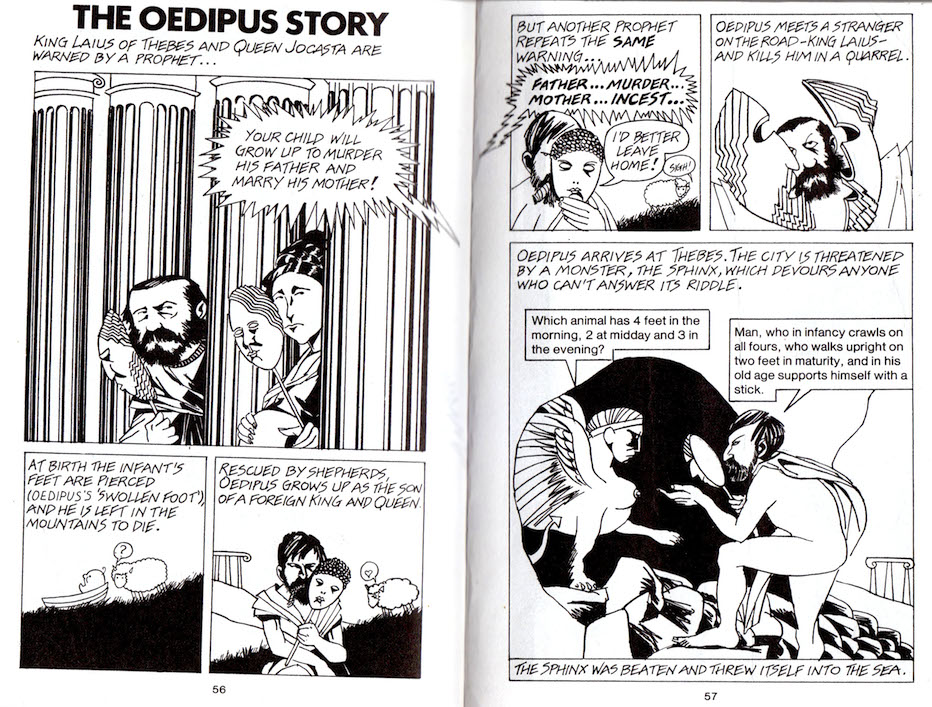 |
| Wednesday October 12, 2016 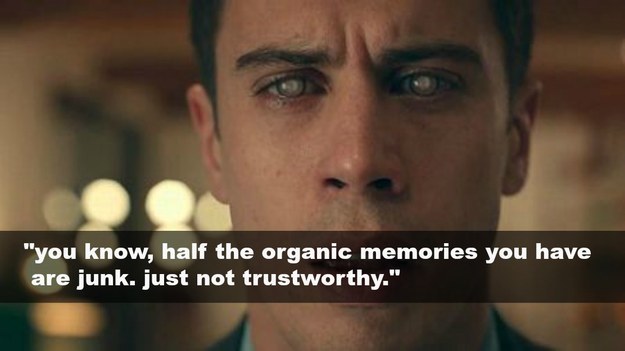 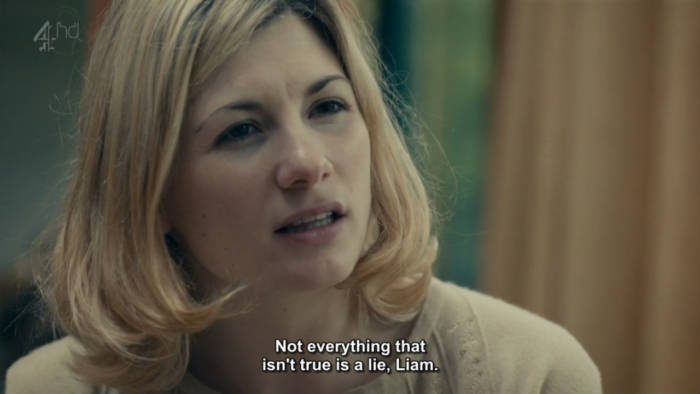 What
happens
at the nexus of technology and subjectivity. Is your
smartphone, with all its amazing recording superpowers a
prosthetic
that extends the range of your humanity or is it, instead,
some sort of
encarcerating robot, some species of dominating artificial
intelligence
to which we now bow down. In class we will screen THE
ENTIRE HISTORY OF
YOU, written by Jesse Armstrong and directed by Brian
Welsh, part of
the BLACK MIRROR series. What
happens
at the nexus of technology and subjectivity. Is your
smartphone, with all its amazing recording superpowers a
prosthetic
that extends the range of your humanity or is it, instead,
some sort of
encarcerating robot, some species of dominating artificial
intelligence
to which we now bow down. In class we will screen THE
ENTIRE HISTORY OF
YOU, written by Jesse Armstrong and directed by Brian
Welsh, part of
the BLACK MIRROR series. |
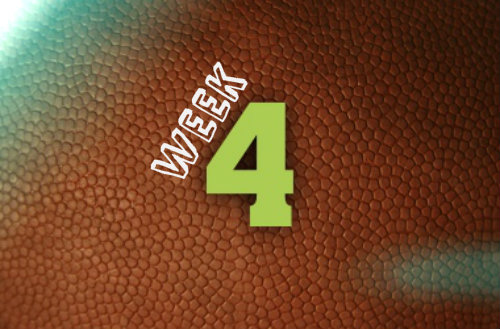 |
| Monday October 17, 2016 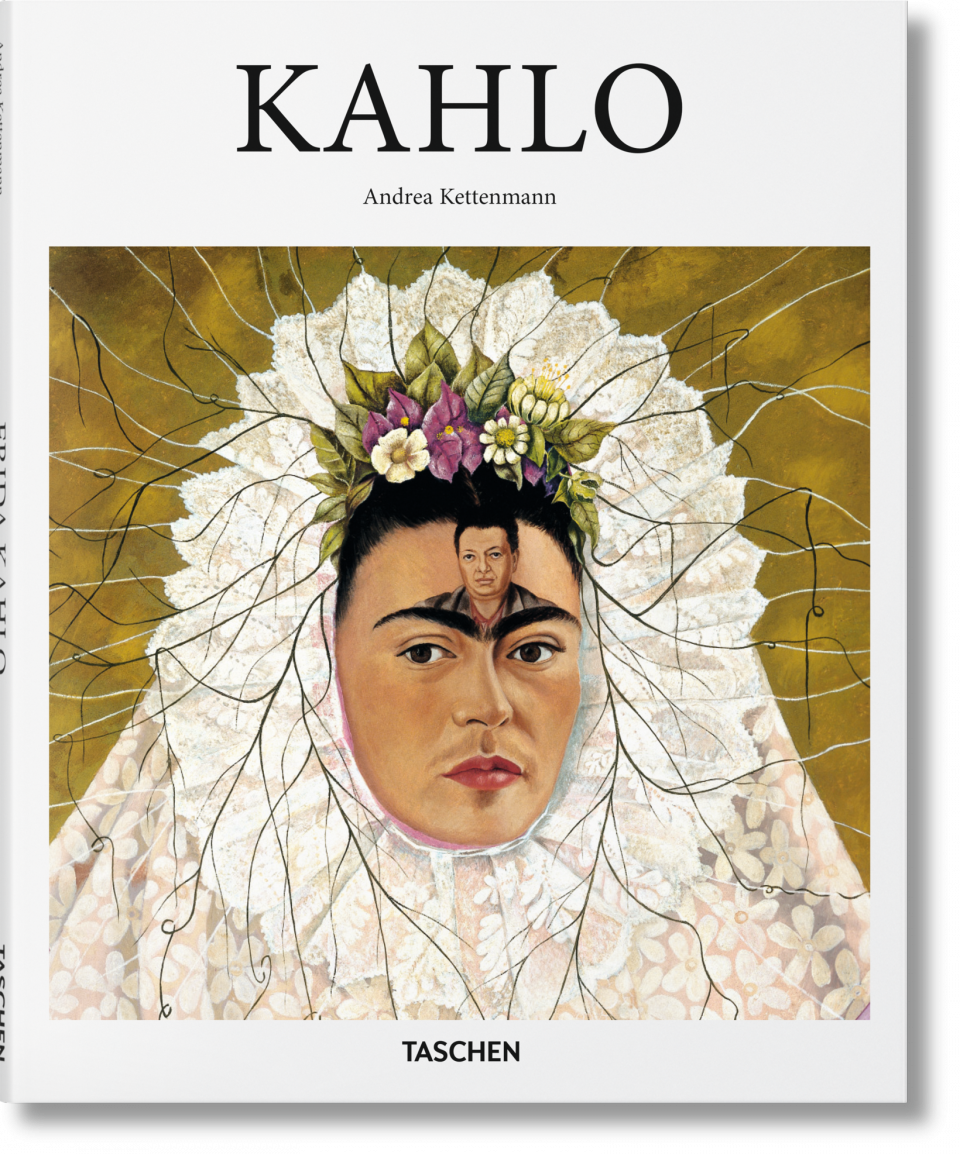 This week, Frida Kahlo is our focus as we ponder the risks and rewards of autobiography, the self-portrait, selfies, and more. Read to page 77 for today's class. 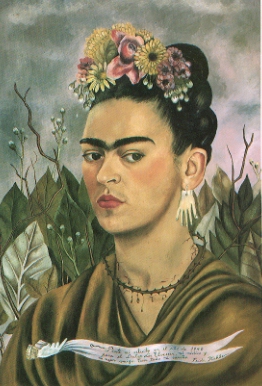 The
Taschen edition of FRIDA KAHLO edited by Andrea Kettenmann
is a
splendid introduction to the work of the most influential
American
artist (or, if you prefer, Artist of the Americas) of the
20th century.
Like FREUD FOR BEGINNERS it is a graphic biography of a
dynamic
creative figure's life. The difference here is that
both the
story and the art is Kahlo's. Add to this the fact
that Kahlo
(along with Rembrandt and Van Gogh) is probably the
premiere painter
whose collected works include multiple self-portraits, and
we begin to
gather her utility for our i/eyegasm class with its
obsession on what
we will call here the Self-story. For class, we will
feature a segment
during my seminar in the big hall we will call YOU ARE THE
PROFESSOR. Send me an email to nericcio@cornell.edu
before 10am
Monday with your name and an attached image of a Kahlo
painting you
would like to interpret in front of the big class.
We will only
have around 10 minutes for this, so please volunteers
ASAP--the first 6
of you to respond will have the floor at the end of class
to regale us
with your compelling semiotic
intellect! The
Taschen edition of FRIDA KAHLO edited by Andrea Kettenmann
is a
splendid introduction to the work of the most influential
American
artist (or, if you prefer, Artist of the Americas) of the
20th century.
Like FREUD FOR BEGINNERS it is a graphic biography of a
dynamic
creative figure's life. The difference here is that
both the
story and the art is Kahlo's. Add to this the fact
that Kahlo
(along with Rembrandt and Van Gogh) is probably the
premiere painter
whose collected works include multiple self-portraits, and
we begin to
gather her utility for our i/eyegasm class with its
obsession on what
we will call here the Self-story. For class, we will
feature a segment
during my seminar in the big hall we will call YOU ARE THE
PROFESSOR. Send me an email to nericcio@cornell.edu
before 10am
Monday with your name and an attached image of a Kahlo
painting you
would like to interpret in front of the big class.
We will only
have around 10 minutes for this, so please volunteers
ASAP--the first 6
of you to respond will have the floor at the end of class
to regale us
with your compelling semiotic
intellect! |
| Wednesday October 19, 2016 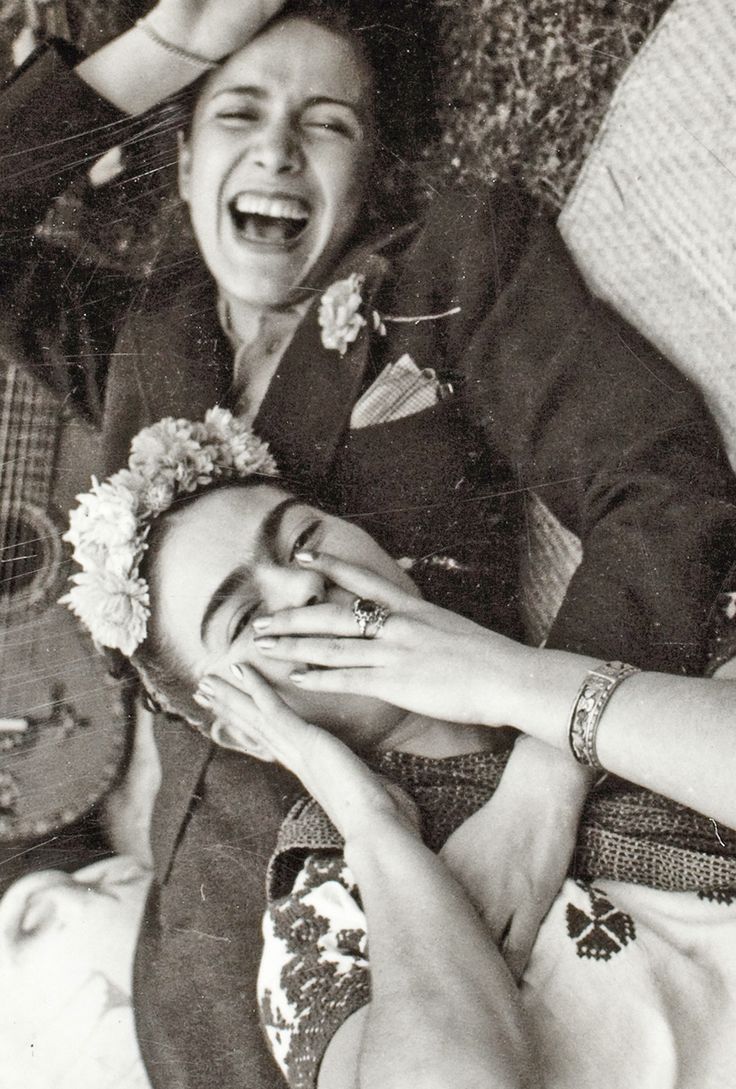 Walk into class having finished reading your Kahlo album book authored by Andrea Kettenmann. All too often, Frida Kahlo's biography is characterized as one of tragedy--this, even though the remarkable Mexican artist, was a loud, outrageous, life-of-the-party. Look for paintings by the redoubtable Mexican artist that contest this limited world view. |
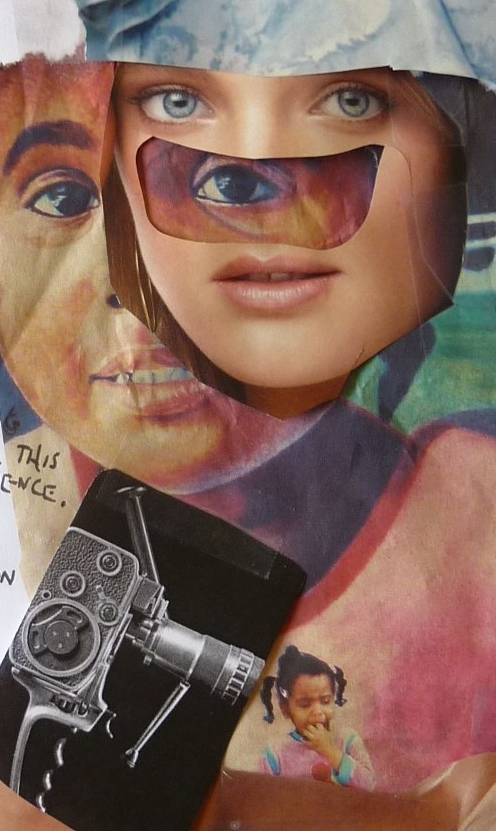 I/EYEgasm Assignment due! I/EYEgasm Assignment due!Picturing Auto/Biography (Note, you will be turning in a digital/pdf version of this assignment via your Turnitin portal on the TED/TRITON system and a hard copy to your TAs in section.) For this assignment, we want you to pursue one of three choices--additionally, your TAs have the authority to augment/alter/adapt this assignment for the specific purposes of their section. 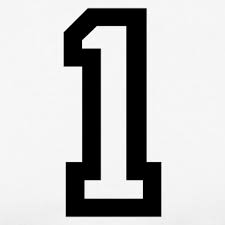 Produce a curated
assemblage of 10 to 20 images that narrate a
significant moment from your life--it is probably best to
stay away
from the most traumatic incidents (see Post
Secret for examples)
as we are not equipped like Siggy Freud to save you from
your
demons. You are free to caption the images in any
way you see
fit. While we are asking you to render a pdf version
of this
assignment for submission via turnitin.com police portals,
we are open
as to the medium you use for the authoring of this
assignment.
You may mount it as a web-page, as a unique instagram
hashtag ( go here
to see the beginnings of my version of the assignment
entitled "Peanut
Butter Rubbed on Eucalyptus Tree" and using the unique
hashtag,
#uceyegasm, on instagram ), as a short youtube video (with
music,
narration, the works or not), as a scrapbook, as a
journal, or as a
traditional paper. Produce a curated
assemblage of 10 to 20 images that narrate a
significant moment from your life--it is probably best to
stay away
from the most traumatic incidents (see Post
Secret for examples)
as we are not equipped like Siggy Freud to save you from
your
demons. You are free to caption the images in any
way you see
fit. While we are asking you to render a pdf version
of this
assignment for submission via turnitin.com police portals,
we are open
as to the medium you use for the authoring of this
assignment.
You may mount it as a web-page, as a unique instagram
hashtag ( go here
to see the beginnings of my version of the assignment
entitled "Peanut
Butter Rubbed on Eucalyptus Tree" and using the unique
hashtag,
#uceyegasm, on instagram ), as a short youtube video (with
music,
narration, the works or not), as a scrapbook, as a
journal, or as a
traditional paper.  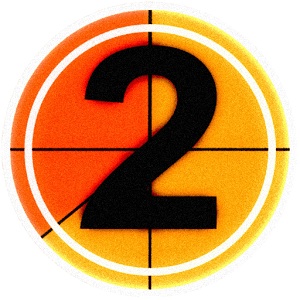 Tell a secret story
about your life now by arranging 15 or more personal
belongings in some logical, artistic, revealing, ciphered
order. The idea here is that the objects you
surround yourself
with, your prosthetics (using McLuhan's theory), are a
facsimile of
you, a trace of you, a shadow of you, a representation
of.... wait for
it ... YOU! It is up to you what medium you use to share
this
arrangement--a large photograph, an album, a web page, a
short digital
film, etc are all acceptable. Tell a secret story
about your life now by arranging 15 or more personal
belongings in some logical, artistic, revealing, ciphered
order. The idea here is that the objects you
surround yourself
with, your prosthetics (using McLuhan's theory), are a
facsimile of
you, a trace of you, a shadow of you, a representation
of.... wait for
it ... YOU! It is up to you what medium you use to share
this
arrangement--a large photograph, an album, a web page, a
short digital
film, etc are all acceptable. 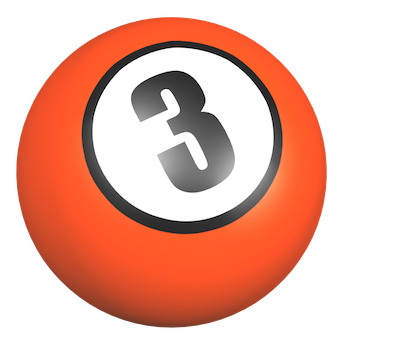 Semiotic
Analysis Option! Do a close reading of one or more of
Frida Kahlo's
paintings making use
of ideas taken and adapted from Berger, McLuhan, Freud,
and
Welsh/Armstrong (The Entire History of You). This "close
reading" may
be written in traditional form, but it might be more
interesting and
valuable to read her self-portraiture via collage--using
snapshots/cuttings from the McLuhan /Berger /Freud /
Welsh-Armstrong
projects to illuminate something hidden and beautiful in
Kahlo's
paintings. A typical version of this assignment might be
made up of
five or so pages of collage/analyses--here is a
sample/fragent of one
way of approaching this project I just dreamed up: Semiotic
Analysis Option! Do a close reading of one or more of
Frida Kahlo's
paintings making use
of ideas taken and adapted from Berger, McLuhan, Freud,
and
Welsh/Armstrong (The Entire History of You). This "close
reading" may
be written in traditional form, but it might be more
interesting and
valuable to read her self-portraiture via collage--using
snapshots/cuttings from the McLuhan /Berger /Freud /
Welsh-Armstrong
projects to illuminate something hidden and beautiful in
Kahlo's
paintings. A typical version of this assignment might be
made up of
five or so pages of collage/analyses--here is a
sample/fragent of one
way of approaching this project I just dreamed up: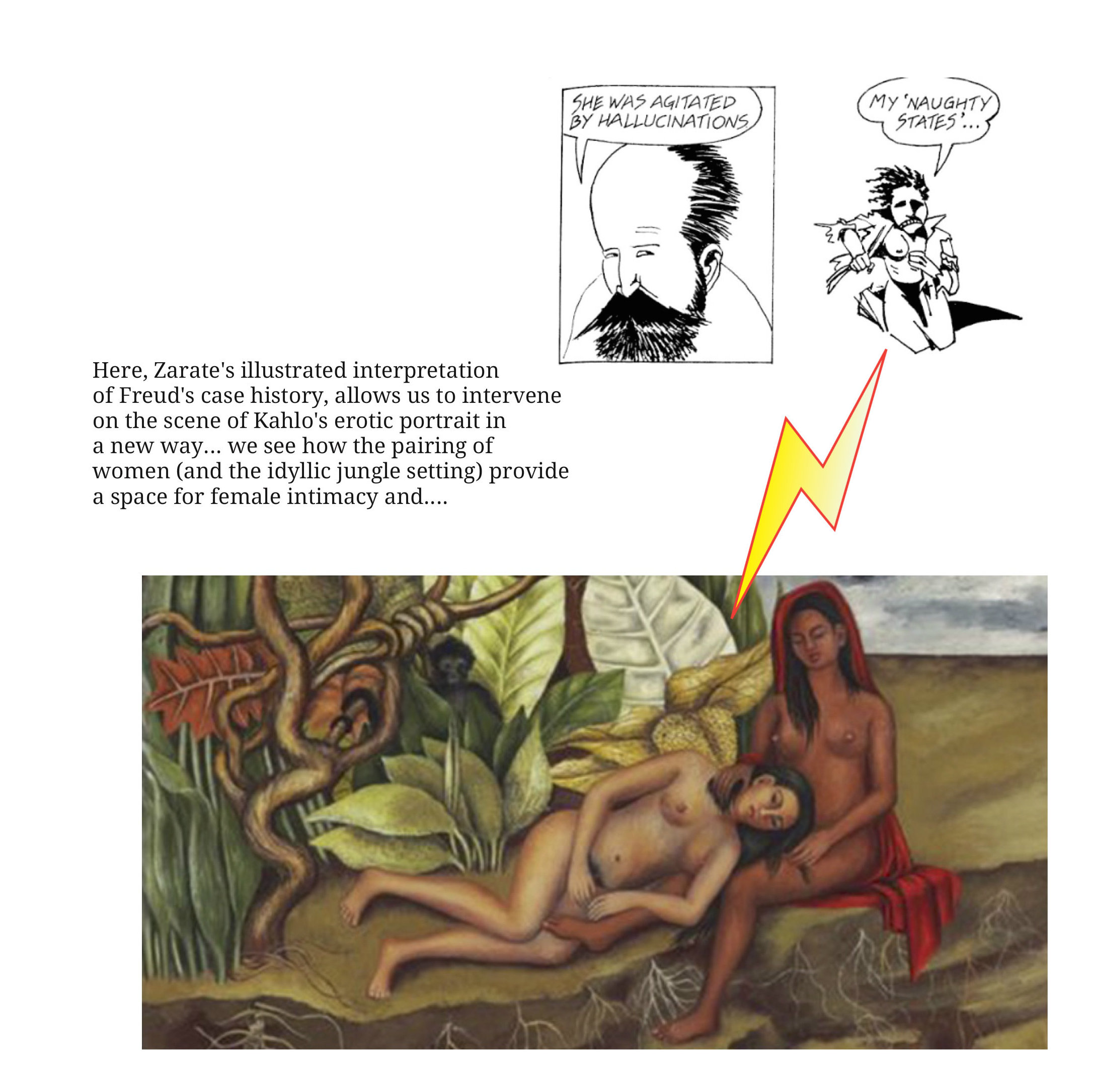 click to enlarge |
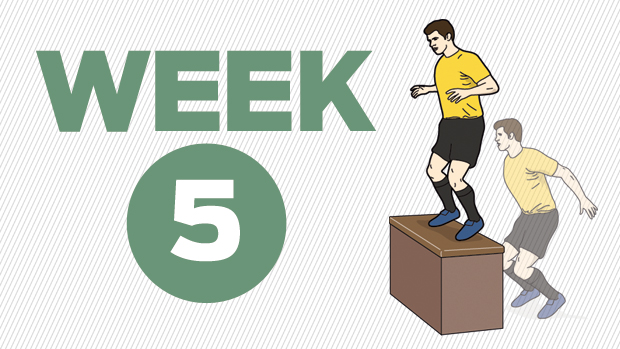 |
| Monday October 24, 2016 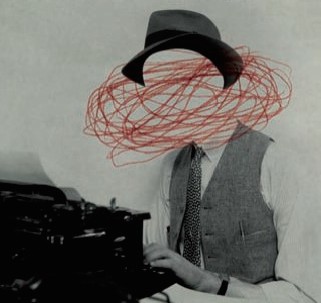 Last week our eyes reveled in a
magnificent tapestry of self-portraiture--the moving oeuvre
of Mexican painter Frida Kahlo. With Kahlo we sought to
look beyond the
tragedies usually associated with the singular semiotic
genius and
focus, instead, on Kahlo's compelling capacity to imagine
and invent
new, jarring, (and, at times, startling) renditions of her
self (or
selves). This week, we are still grappling with issues of
self-portraiture, but we do so with a novela
(short novel) as opposed to paintings. Your mission for
today's get
together in our Mandeville bunker? Read the first 91 pages
of MISS
LONELYHEARTS--if you are not using the edition carried in
the UCSD
bookstore, read to the end of chapter entitled "Miss
Lonelyhearts in
the Country." This is a challenging, upsetting, cynical,
satirical
American masterpiece. As you read, consider the
relationship between
your own search for evolution and metamorphosis and that
experienced by
"Miss Lonelyhearts." While you and I have a little voice
inside that
plagues us at times with its insistent demands and
torturous
questionings, Miss Lonelyhearts has Shrike, as outsized
and demented a
warped tormentor/antagonist as exists in American
literature. Brace for
incoming. Last week our eyes reveled in a
magnificent tapestry of self-portraiture--the moving oeuvre
of Mexican painter Frida Kahlo. With Kahlo we sought to
look beyond the
tragedies usually associated with the singular semiotic
genius and
focus, instead, on Kahlo's compelling capacity to imagine
and invent
new, jarring, (and, at times, startling) renditions of her
self (or
selves). This week, we are still grappling with issues of
self-portraiture, but we do so with a novela
(short novel) as opposed to paintings. Your mission for
today's get
together in our Mandeville bunker? Read the first 91 pages
of MISS
LONELYHEARTS--if you are not using the edition carried in
the UCSD
bookstore, read to the end of chapter entitled "Miss
Lonelyhearts in
the Country." This is a challenging, upsetting, cynical,
satirical
American masterpiece. As you read, consider the
relationship between
your own search for evolution and metamorphosis and that
experienced by
"Miss Lonelyhearts." While you and I have a little voice
inside that
plagues us at times with its insistent demands and
torturous
questionings, Miss Lonelyhearts has Shrike, as outsized
and demented a
warped tormentor/antagonist as exists in American
literature. Brace for
incoming.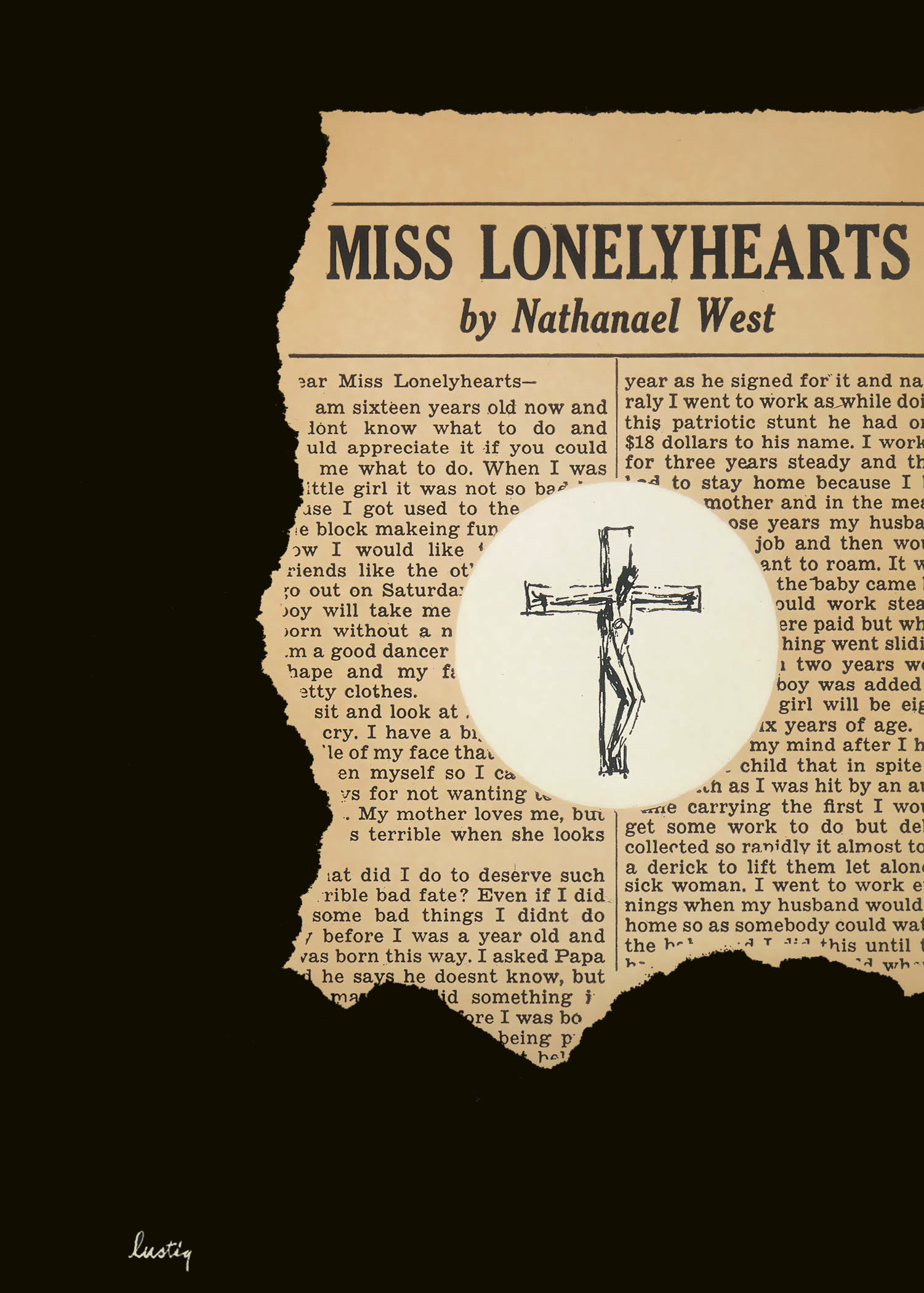 |
| Wednesday October 26, 2016 Finish your reading of Nathanael Weinstein's (better known as Nathanael West's) MISS LONELYHEARTS. During our shared time together in the Mandeville 210 chamber of fun, we will continue our discussion of Miss Lonelyhearts. For class today, it would be best if you showed up with a sheet of paper on which you have typed the two passages from the novel that, in your view, are the most curious, compelling, confusing, moving, bracing, torturous, or provocative. 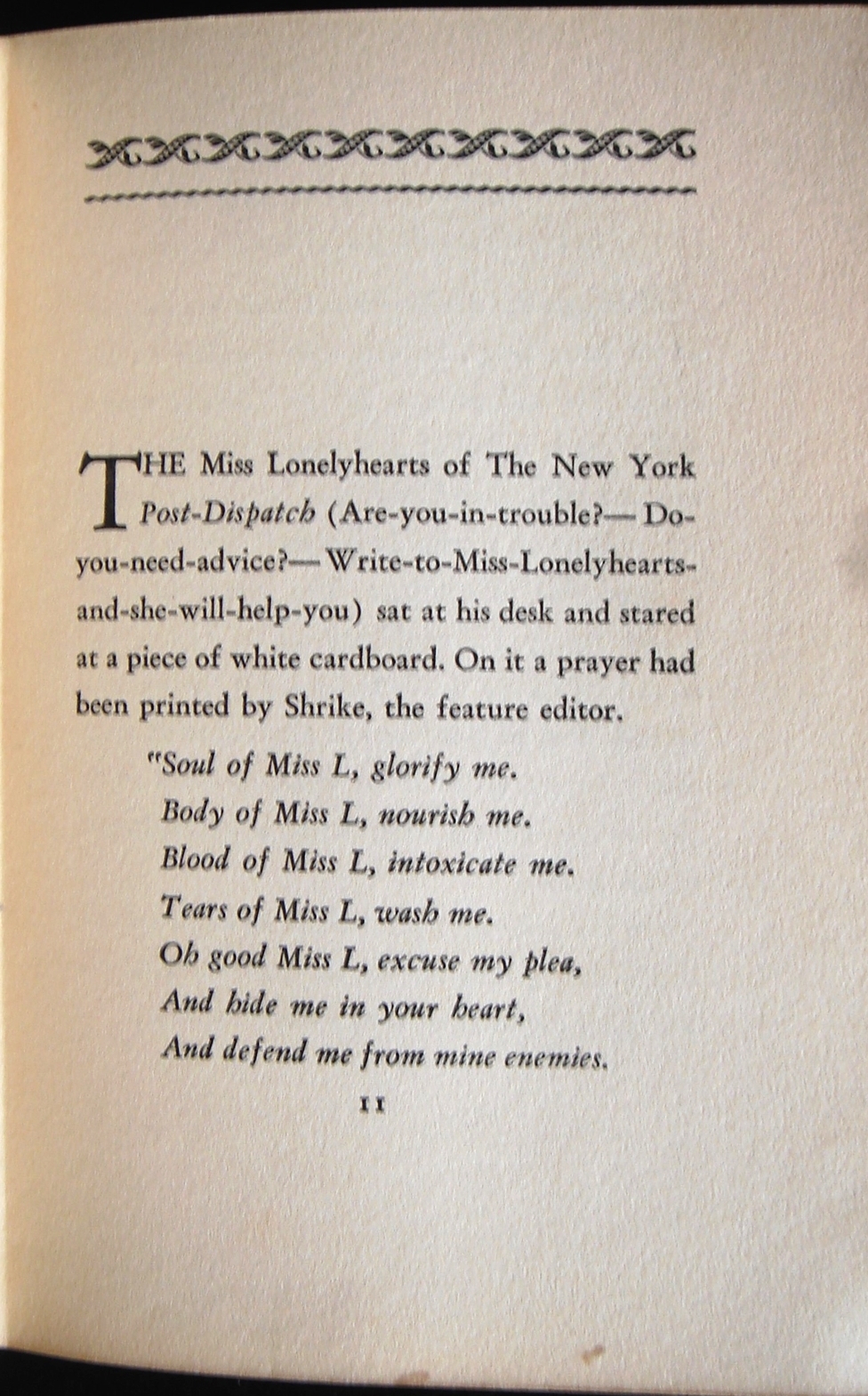 |
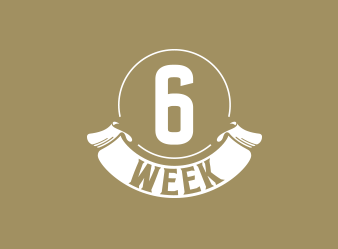 |
| Monday October 31, 2016 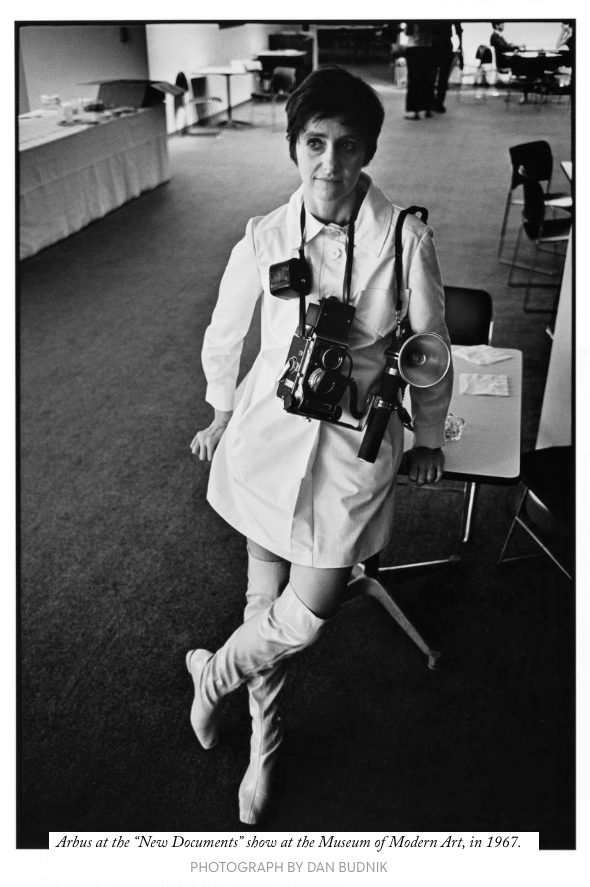 Your thoughtful (somewhat addled-minded) Professor understands the demands of the undergraduate experience, so since you are presently wrestling with your Self-Historiography assignment this week, I am giving you a break from your reading. Why? Because pictures, pardon the pun, are the FOCUS of our adventures this week: the photographic portrait in the 20th and 21st centuries. In class we will spend a few minutes getting to know the work of (do beware! the google image-search links that follow may inadvertantly include images that are of an adult nature): Man Ray, Diane Arbus, Francesca Woodman, Guy Bourdin, Helmut Newton, and Tina Modotti. But the bulk of our class today will be taken up with watching a video documentary on Arbus's life and work entitled Going Where I've Never Been: The Photography of Diane Arbus (1972) directed by John Musilli with writer Stephan Chodorov. 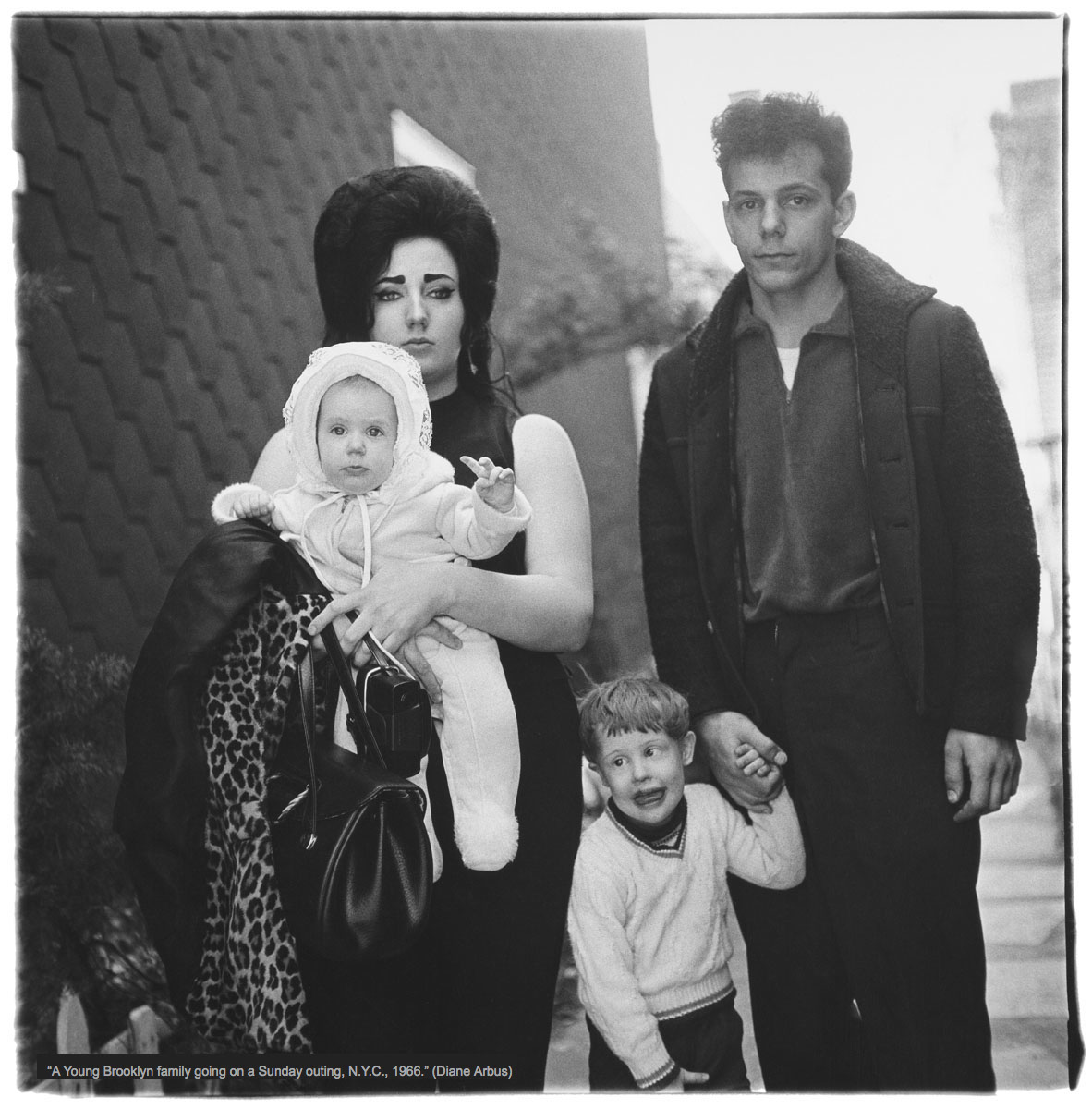 |
| Wednesday November 2, 2016 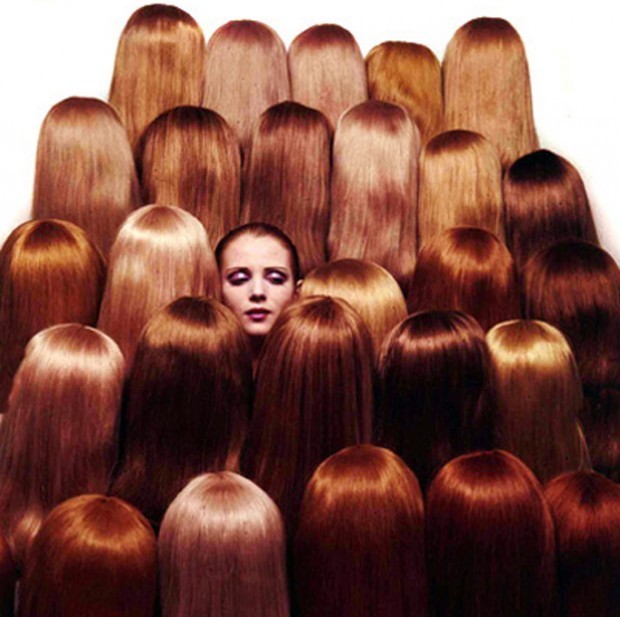 We continue our discussion of the work of Diane Arbus, Francesca Woodman, Man Ray, Guy Bourdin, Helmut Newton, and Tina Modotti. Photography is ubiquitous--a fancy way of saying it is always already everywhere. Always with us now with our smartphone communications devices, the camera allows for a coming together of technology and being, electricity and the existential--blendings with seen and unforseen consequences. In preparation for todays class, if you wish, take a few moments to carefully read/gloss/devour the words of Susan Sontag--she may even help you as you configure your self historiographies. 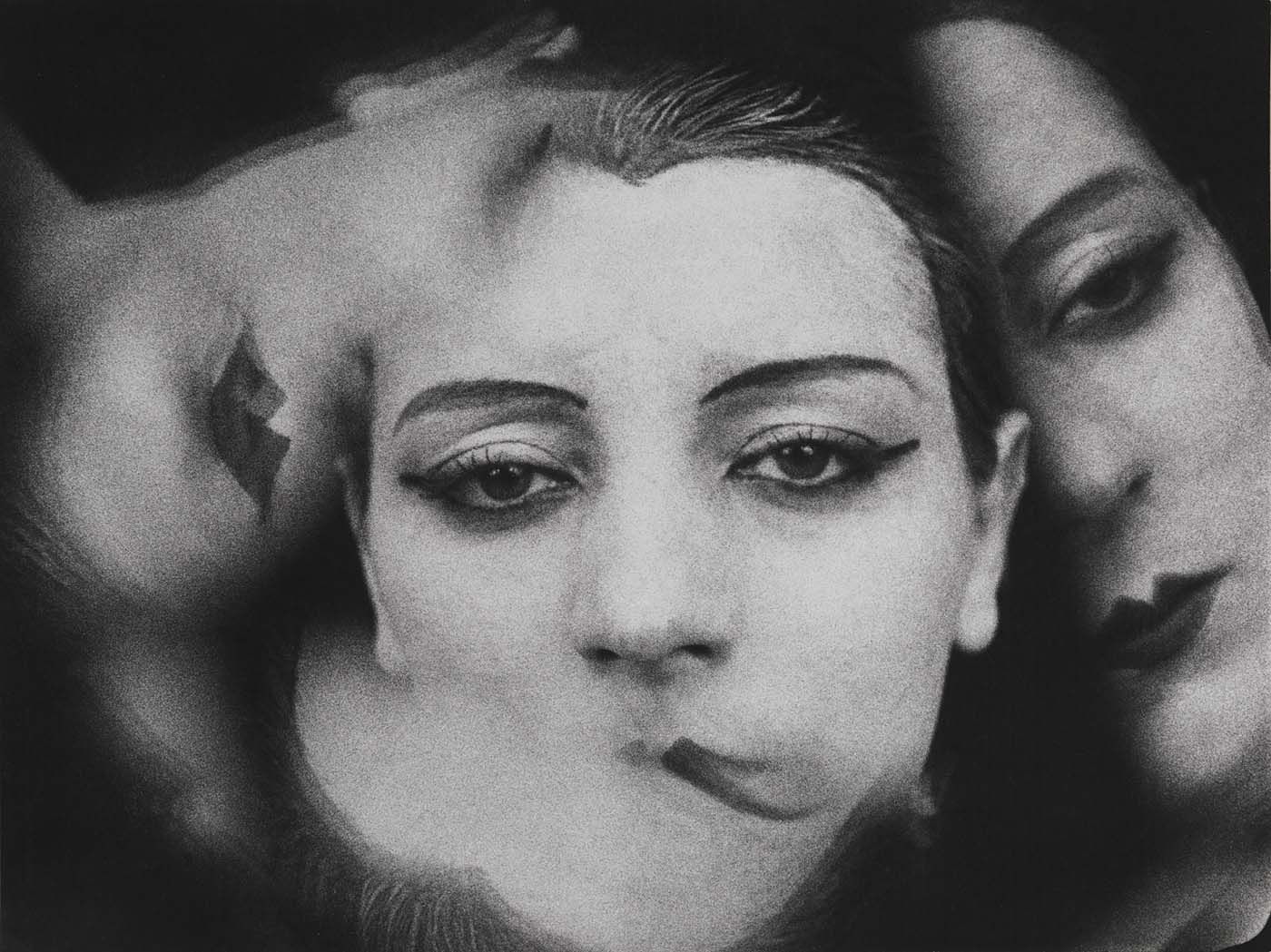 |
Self-Historiography
Assignment!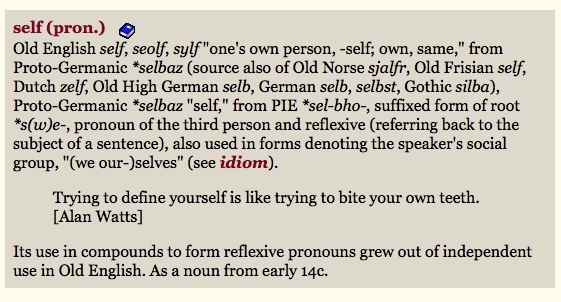 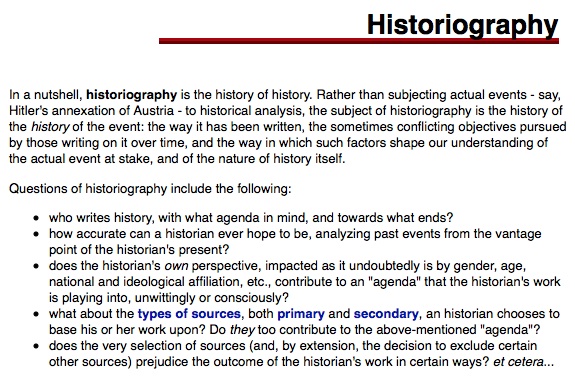 Even with these useful dictionary snapshots, we might, at first be perplexed by the notion of a "Self Historiography"--"What the hell is that, Prof" one of you might be driven to exclaim. In our class it is one of THREE things. Your choice!!!! Either...  The Entire History of
You The Entire History of
YouA personal narrative, chronicling a watershed moment from your lived history that you create and tell as a video OR a video adaptation of a scene/idea from the works we read in the class.   A Statement of
Purpose A Statement of
PurposeA 2 to 4-page (about 500-1000 words) paper that may take the form of a cover letter with resume, artistic manifesto, or essays written in application for graduate school, internships, study abroad, scholarships, fellowships, grants, awards, etc. You should approach this assignment as a dry-run for the actual statement of purpose you will be using as you try to get a job or get into a graduate program. Be sure to let us know what kind of graduate program or job you will be applying to as this will assist us in assisting you to write up the most successful Statement of Purpose.   Anatomy of an Autobiography or Toward a
Historiography of Autobiography Anatomy of an Autobiography or Toward a
Historiography of AutobiographyThis is a four page paper, 1000 words or so. In the first two pages you will tell a brief chapter from your life, narrating the event using the skills you have stolen and adapted from West, Kahlo, Herzog, Black Mirror, McLuhan, Berger, etc. In the last two pages, the "historiography" part, you will narrate the strategy you employed in forging the first two pages, focusing on the writerly choices that confronted you as you authored your masterpiece. While this is a typical "paper," you should feel free to include pictures, drawings, sketches, clippings, etc to add to add a visual dimension to your project. |
 |
| Monday November 7, 2016 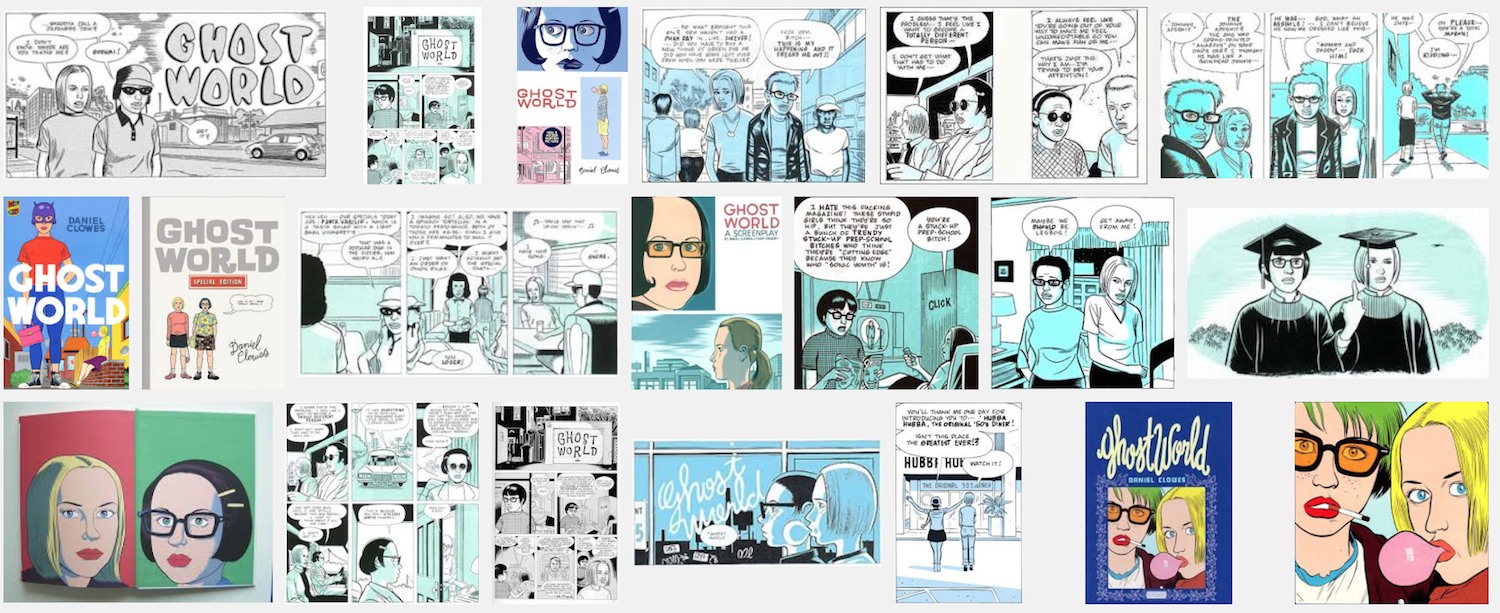 Walk into class having finished Dan Clowes's GHOST WORLD. Clowes visionary bildungsroman (coming-of-age) graphic novel immerses in what can only be called the American grotesque. With visual/popular culture as the backdrop, Clowes divulges the secret and not-so-secret lives of young women in a moment of evolution and metamorphosis. 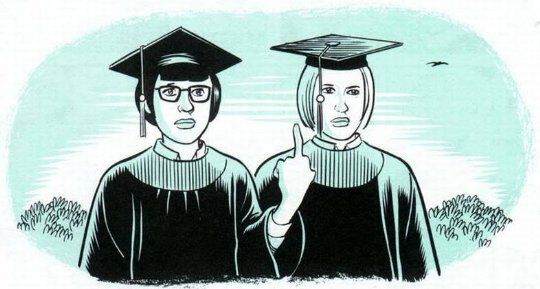 |
| Wednesday November 9, 2016 Read Oliver Mayer's play JOY OF THE DESOLATE in your edition of THE HURT BUSINESS--the characters in this play are very much like you, away at college, fighting to become something/someone you may not even imagine to be (ok, it is set in Ithaca, NY not La Jolla, so the locale is different, but the rest of it, save for the ghost?!, may seem very much the same. Read as much of the supplemental material (essays, interviews, pictures, etc) as you wish. 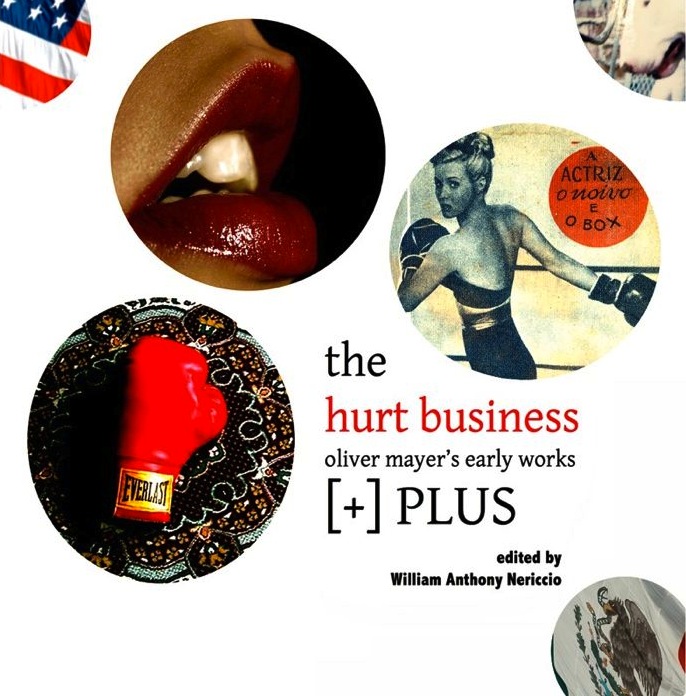 |
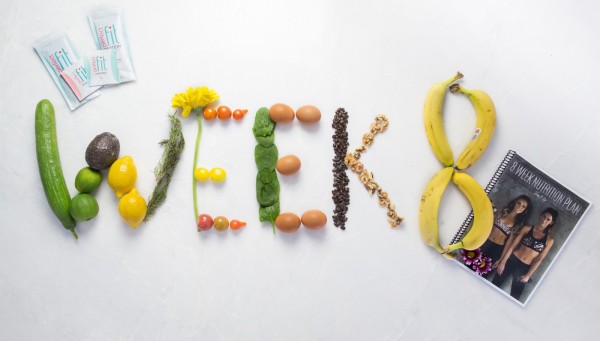 |
| Monday November 14, 2016 Come into our glorious cold war-era bunker, Mandeville 210 having read the first play by Oliver Mayer collected in your HURT BUSINESS book, YOUNG VALIANT. The play is very much about the young becoming adult and adults becoming ancient and about the crisis metamorphosis can bring to a home and family. Theatre is a place where writers theatricalize crisis, transforming our neuroses and anxieties into a performance where we join in the experience. Come to class today having handwritten out (type or print if your writing is incomprehensible) two or three lines from the play that caught your eye as significant, funny, provocative, or strange. 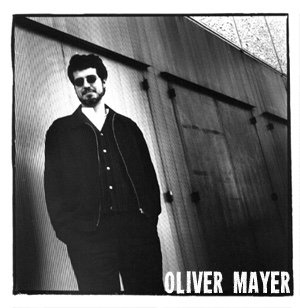 |
| Wednesday November 16, 2016  n
this class, among many diverse other things, we are
learning how to transform event
into story, memory into narrative--and we are doing so
largely without
regard to medium. And while our focus has been on
our selves, on
the I/EYE dialectic,
it is just as important (if only for reasons of empathy)
to be able to tell the story of the other.
One of the best contemporary cinematic
storyteller/documentarian is the Munich-born, German
director Werner
Herzog. In earlier cinematic epics like Fitzcarraldo and Aguirre, the Wrath of God,
Herzog took audiences on bracing odysseys, filmed voyages
into the
heart of darkness that were both violent and
introspective. Of
late, however, Herzog has been known more for his
documentary feature
films like Grizzly Man
and Cave of Forgotten
Dreams. As
the run time of these feature documentaries is too long
for one class
period (it's Thanksgiving week, god damn it prof!), today
we will
screen a short-featured documentary by Herzog entitled FROM
ONE SECOND TO THE NEXT. Read more about
Herzog's short film and the project it is a part of, IT
CAN WAIT, here
and here--in
class,
we will screen the film and have a brief discussion. Oddly
enough, though Herzog is associated with independent
cinema and
counter-cultural film, corportate monster ATT and
advertising agency BBDO
funded FROM ONE SECOND TO THE NEXT. This, too, might
figure in our discussion. n
this class, among many diverse other things, we are
learning how to transform event
into story, memory into narrative--and we are doing so
largely without
regard to medium. And while our focus has been on
our selves, on
the I/EYE dialectic,
it is just as important (if only for reasons of empathy)
to be able to tell the story of the other.
One of the best contemporary cinematic
storyteller/documentarian is the Munich-born, German
director Werner
Herzog. In earlier cinematic epics like Fitzcarraldo and Aguirre, the Wrath of God,
Herzog took audiences on bracing odysseys, filmed voyages
into the
heart of darkness that were both violent and
introspective. Of
late, however, Herzog has been known more for his
documentary feature
films like Grizzly Man
and Cave of Forgotten
Dreams. As
the run time of these feature documentaries is too long
for one class
period (it's Thanksgiving week, god damn it prof!), today
we will
screen a short-featured documentary by Herzog entitled FROM
ONE SECOND TO THE NEXT. Read more about
Herzog's short film and the project it is a part of, IT
CAN WAIT, here
and here--in
class,
we will screen the film and have a brief discussion. Oddly
enough, though Herzog is associated with independent
cinema and
counter-cultural film, corportate monster ATT and
advertising agency BBDO
funded FROM ONE SECOND TO THE NEXT. This, too, might
figure in our discussion.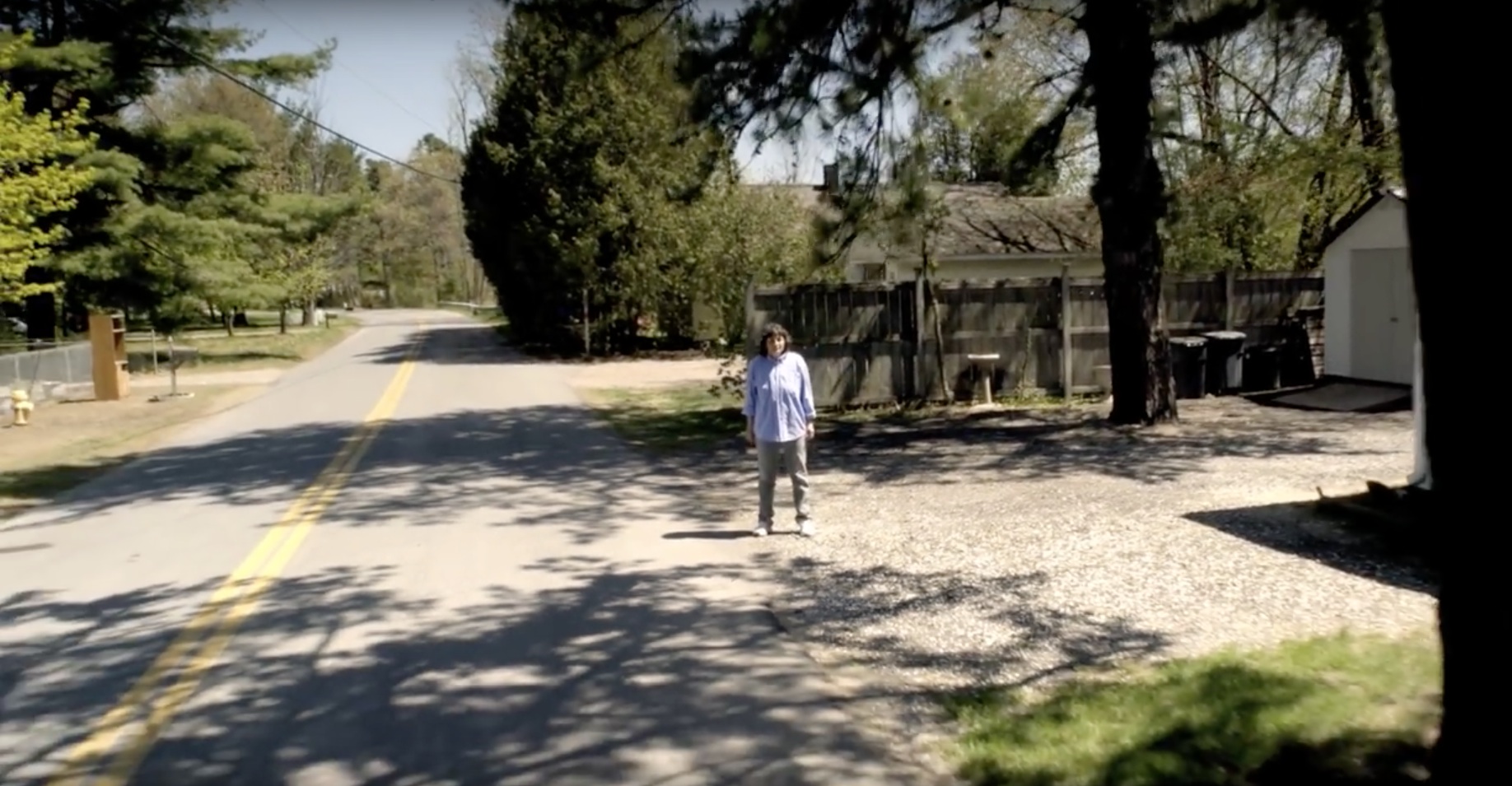 |
 IGNITE-Style "Visualized Monologues" Presentation An Ignite-style talk is a 5 minute presentation with you talking, accompanied by 20 slides sequenced to shift every seconds--there are great guides on the web to guide your preparation here and here (and many more indexed by google here). What is the timeline for your Ignite Visualized Monologues? Here's a useful guide:
Please consider a holistic approach to this effort--there is no reason you cannot use elements you have already fashioned for other assignments this term and INCORPORATE them into your Ignite Visualized Monologue. Here is how Katherine Agard, one of our cool TAs, conceives of this "holistic" approach--you are free to use/adapt it as you wish, but please consult with your TAs as they are where the buck stops, the bottom line, your ultimate gurus! I
have
been thinking of how I want to explain the connections
between the
different assignments to our undergraduates. And so far
I have come up
with the idea that emphasizes narrative, juxtaposition
and
comic/graphic studies--paying attention to how the books
we have been
reading choose to communicate their subject matter or
direct their
attention.
Consider how our Picturing Auto/Biography assignment--make a series of images --tests their ability to construct or suggest a narrative using visual evidence, researching images, considering basic design elements and basic principles of cause/effect and juxtaposition in putting images together... Next, consider how the second assignment - the self historiography--including the video option--is about telling a story to different intimate audiences. It might be fun to consider the option of doing a short video on the same topic but to two radically different audiences. Here, a student encounters how the stories they tell to one audience (say an employer) differ from that to another audience (say a prospective date). How would they dress? What questions would they prepare to answer? What narrative do they suggest? This third assignment--the Ignite presentation--might then be conceived of as a combination of the Picturing Auto/Biography challenge and the the self historiography prompt. There is even a way of intergrating the portfolio assignment--a student could take their ignite presentation and put it in 2D form. What external supplement (blog, book, photo gallery and yes, personal statement) would support your chose of words without your body being there? How do you demonstrate the way that you look at things/the lens you observe the world through in 2D form? And drawing from examples from all the books about how things have been translated from one form to another. It strikes me that Katherine's approach, cited at length here, provides a clear roadmap for some of you who have been grappling with the assignments. In any event, here are a couple of good Ignite presentations I found on their site--click the image for the video: 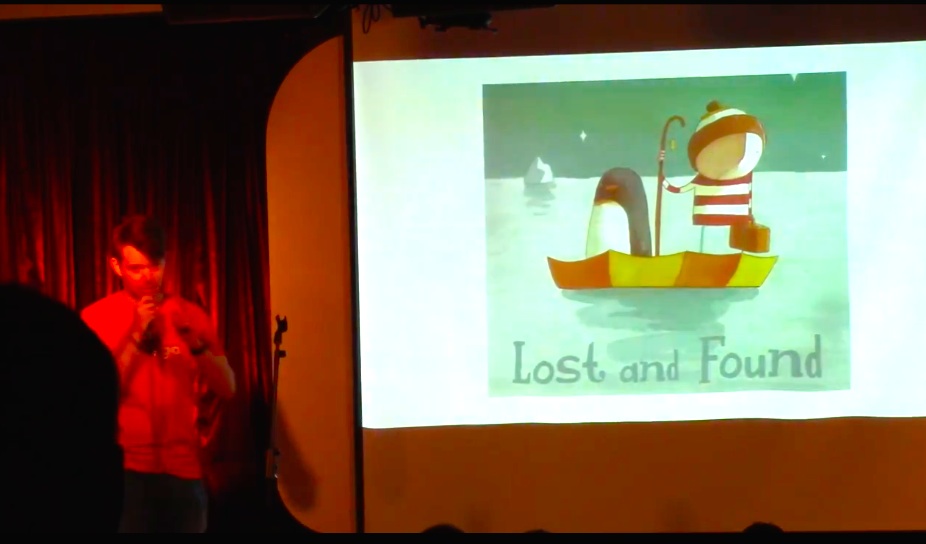 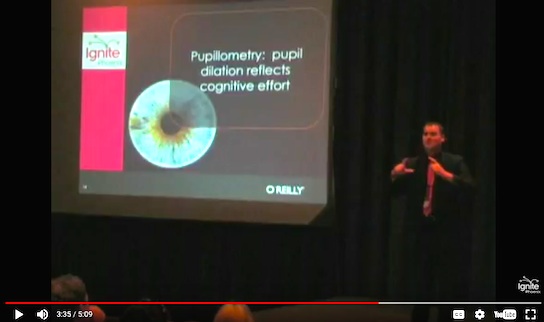 |
 |
| Monday November 21, 2016 Hari Alluri in the house! WHERE? In Mandeville 210--the Bunker of Love @1pm, Monday, November 21, 2016. It's a very cool day in our class as a San Diego-based international poet and writer Hari Alluri joins us for our pre-Turkey day class. Memory into Metaphor Manufacturing [Collective?] Identity Hari Alluri “Hari Alluri is Michaux for our time. Which is to say: he is the poet who is able to find myth in our days of sorrow and displacement, when so many lose homes and identities, Hari Alluri offers a new music. When cities are destroyed by fire, Hari Alluri offers lyric fire that heals the heart, that lets the imagination save us. When there is nothing left to say and the page of our drive to stop the pain is brightly-lit and blank, Hari Alluri brings a few words that sing, brings them by the hand, gives them to us—not just words but images, sparks, from which the fire comes, from which whole villages are alive again. This is the poet to live with.” – Ilya Kaminsky, author of Dancing in Odessa
You will arrive in class having printed out and read our selection of materials including Hari Alluri's interview and poems, bringing with you your marked up copies. You should, of course, underline/mark/highlight any moments that you are moved, troubled or confused by in the required reading. Alluri's presentation will foreground our ongoing critical explorations and interrogations of self-portraiture, autobiography, self-fashioning, and performance with an emphasis on Alluri's odyssey as a dynamic, influential, and cutting-edge creative artist. Headsup: We will be taking attendance in a new way today so be sure to come to class with pen and paper!  Hari Alluri is an author who, according to U.S. Poet Laureate Juan Felipe Herrera, “carries a new, quiet brush of multi-currents, of multi-worlds to paint this holographic life-scape.” A poet and co-founding editor of Locked Horn Press who immigrated to South Vancouver, Coast Salish territories, at age 12, Alluri's work appears in several journals and anthologies including Cutthroat, Kartika, Kweli, Sundog Lit, and Lumina. He has a BA in Sociology with a Diploma in Intercultural Education and Training from the University of Victoria, and holds an MFA in Poetry from San Diego State University. Hari Alluri's first collection of poetry, Carving Ashes, is published by CiCAC Press and his first first chapbook, The Promise of Rust, is published by Mouthfeel Press. Kaya Press is publishing his newest work, The Flayed City. |
| Wednesday November 23, 2016 NO CLASS | Thanksgiving 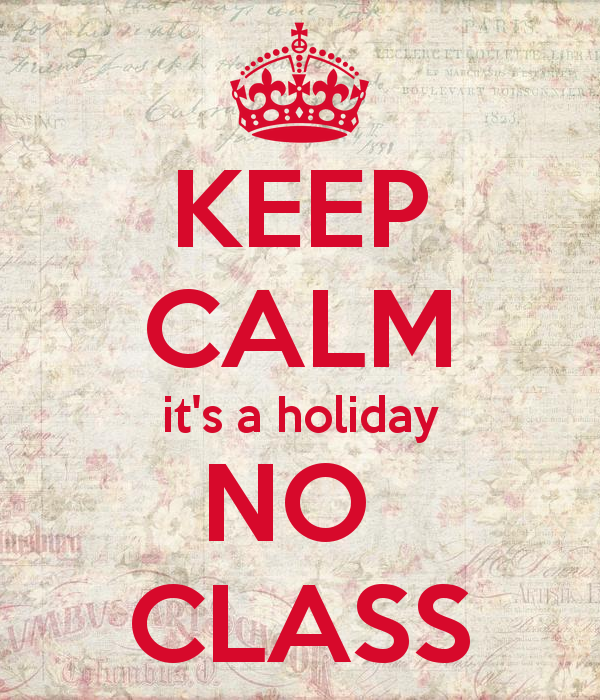 |
 |
| Monday November 28, 2016 It's our final class together in the big basement bunker, Mandeville 210, and we celebrate our quarter-long Eyegasm sojourn-with in-class LIVE performances by some of the top Ignite presentations of the semester from all of the different sections! 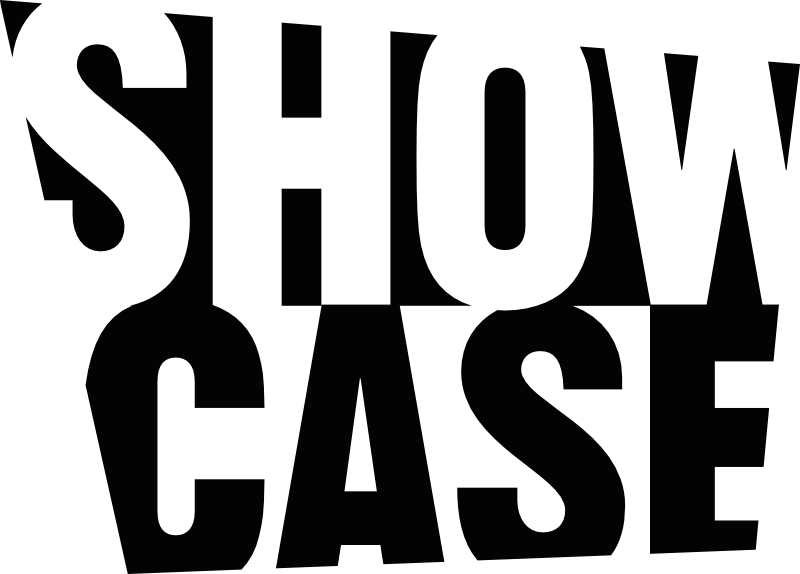 |
 Wednesday WednesdayNovember 30, 2016 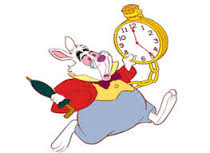 No
class in the big room
today--I will be available for final consultation / discussion between
3:30 pm to 4:45pm at The Loft, Thursday, December 1, 2016 and via email
at
bnericci@mail.sdsu.edu (note: I am rushing over from SDSU, so I may be
a wee bit delayed! No
class in the big room
today--I will be available for final consultation / discussion between
3:30 pm to 4:45pm at The Loft, Thursday, December 1, 2016 and via email
at
bnericci@mail.sdsu.edu (note: I am rushing over from SDSU, so I may be
a wee bit delayed! |